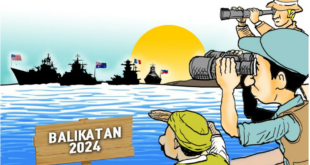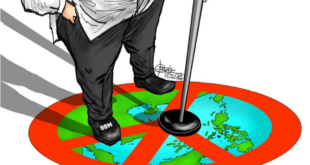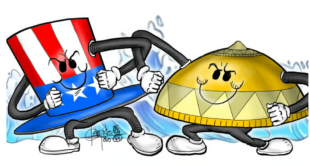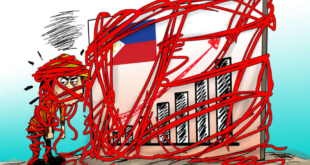
Nature provides a compelling need for discourse instead of dispute in the West Philippine Sea, as the buildup of structures to establish territorial stakes had resulted in the degradation of marine resources.
Moreover, dialogues should also take up the responsibility of nations that disturb the delicate balance of marine life in the contested region.
According to an independent study, dredging and other maritime activities in the disputed area, primarily from the People’s Republic of China, or PRC, have devastated coral reefs, with vast areas destroyed or badly damaged.
In a recent report, the Asia Maritime Transparency Initiative, or AMTI, indicated that “increased fishing, dredging, and landfill, along with giant clam harvesting” took place in the West Philippine Sea, or WPS, and had threatened the existence of “thousands of species found nowhere else on earth.”
The report showed footage of a Philippine Coast Guard survey of Sabina Shoal in the WPS, revealing a marine ecosystem with little to no sign of life and a discolored seabed.
The survey, done last September, exposed severe damage to the coral reef, coinciding with the presence of Chinese maritime militia vessels in the Philippines’ exclusive economic zone.
Thus far, reclamation to build artificial islands has destroyed more than 25 square kilometers of coral reef, with 75 percent of the damage done by the PRC, according to AMTI, a project of the Center for Strategic and International Studies, a Washington DC-based think tank.
An additional 66 square kilometers of coral reef were damaged due to giant clam harvesting by Chinese fishermen.
Industrial fishing by the PRC and Vietnam, particularly those using the bottom-trawling method in which a net is towed along the seabed, has seriously damaged the marine environment.
Overall, fish stocks in the WPS are depleted, with catches stagnating since the 1990s, the report said.
PRC, based on exhaustive research, was not the only nation that had set up structures in the WPS.
Vietnam, Brunei, Malaysia, the Philippines, and Taiwan also built marine outposts that affected the sea ecosystem.
With its encompassing claim on the strategic waterway, Beijing has created new islands that were the source of the biggest threat to nature as it continues to disregard an international tribunal’s 2016 ruling dismissing the nine-dash line claim as legally invalid.
In a display of dark humor, the PRC recently upgraded its claim to a 10-dash line to confound the Permanent Court of Arbitration’s award that favored the Philippines.
According to the study, building outposts and developing artificial islands use invasive methods such as dredging the seabed to gather material for landfill or land reclamation.
“China has caused the most reef destruction through dredging and landfill, burying roughly 4,648 acres of reefs,” AMTI reported. That’s about three times more than Vietnam, which has the next highest total.
The report titled “Deep Blue Scars: Environmental Threats to the South China Sea” also cited PRC’s dredging method: “Its cutter suction dredgers would slice into the reef and pump sediment through floating pipelines to shallow areas to deposit it as landfill. This process disturbed the seafloor, creating clouds of abrasive sediment that killed nearby marine life and overwhelmed the coral reef’s capacity to repair itself.”
Beijing conducted the bulk of its artificial island building from 2013 to 2017 and, by 2022, had full military use of the three largest reefs — Subi, Mischief, and Fiery Cross.
That was before and after the crucial ruling of the United Nations-backed court, which stated that its historical claims on the WPS have no basis.
Amid the intensifying dispute, it is not any of the nations with a territorial stake but nature that comes out as the biggest loser.
*****
Credit belongs to: tribune.net.ph
 Atin Ito First Filipino Community Newspaper in Ontario
Atin Ito First Filipino Community Newspaper in Ontario






